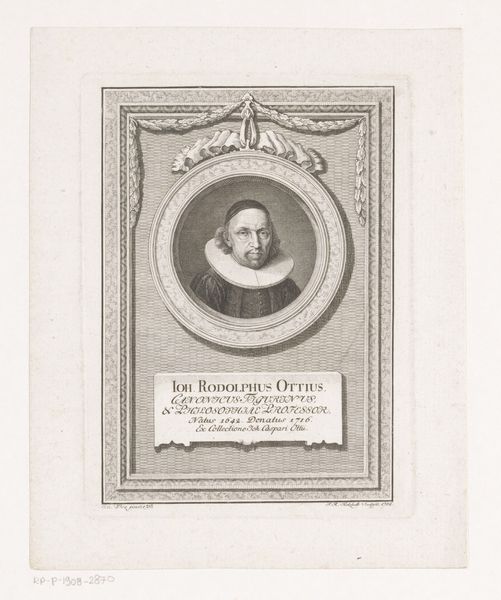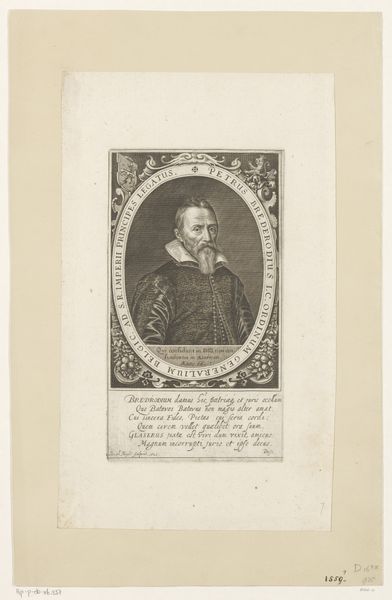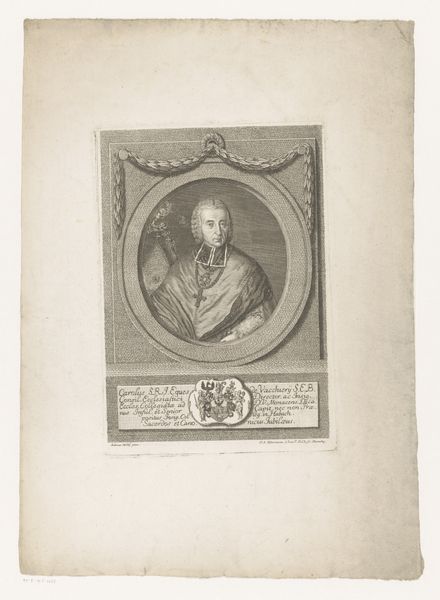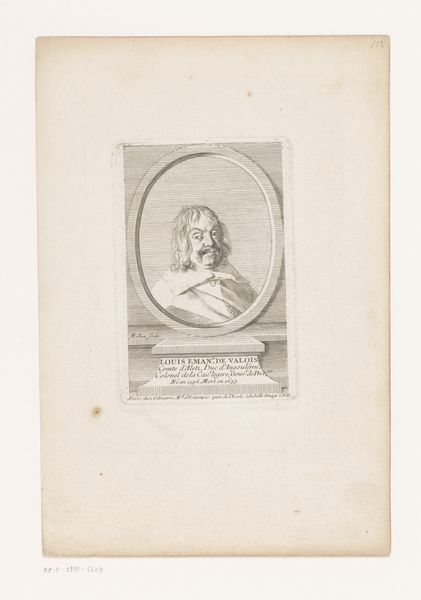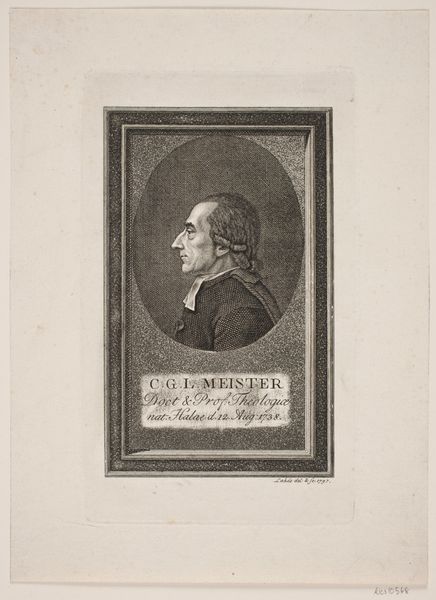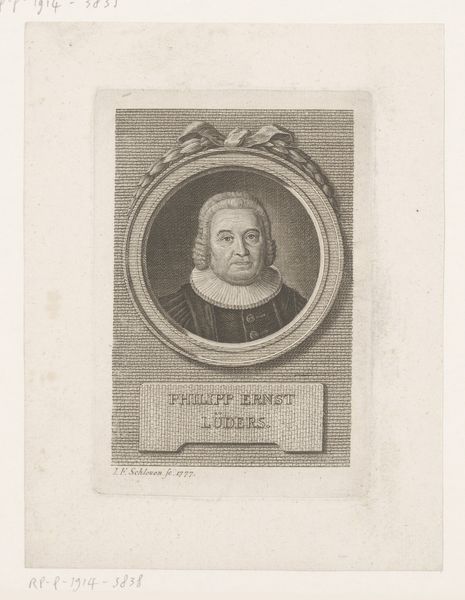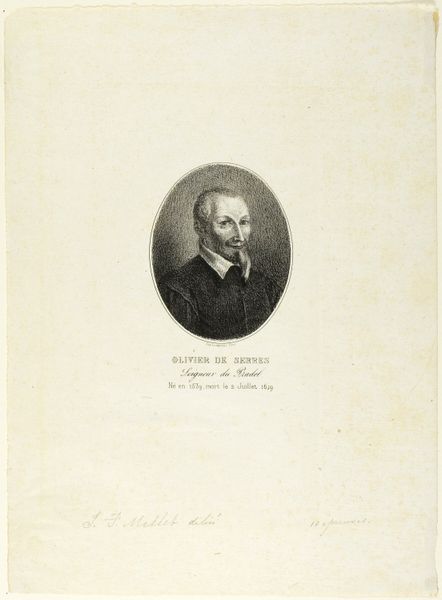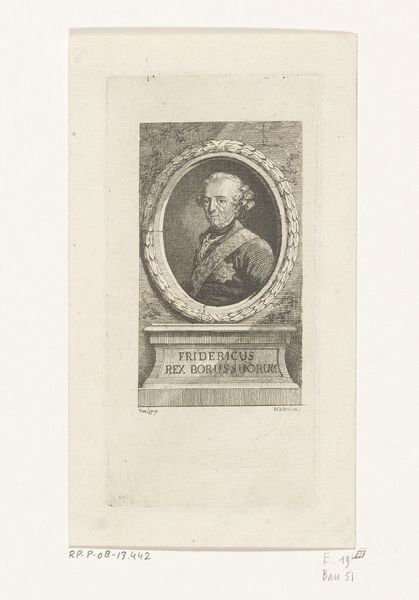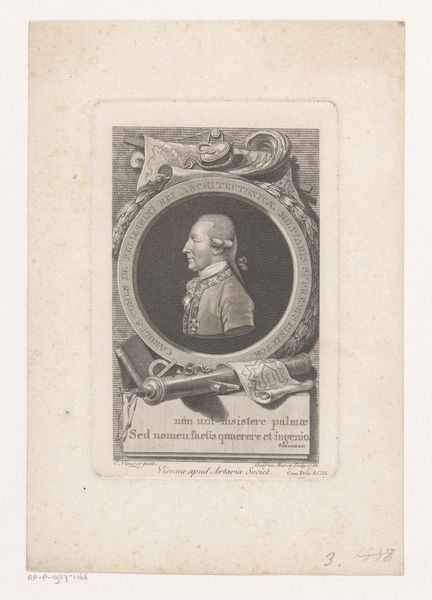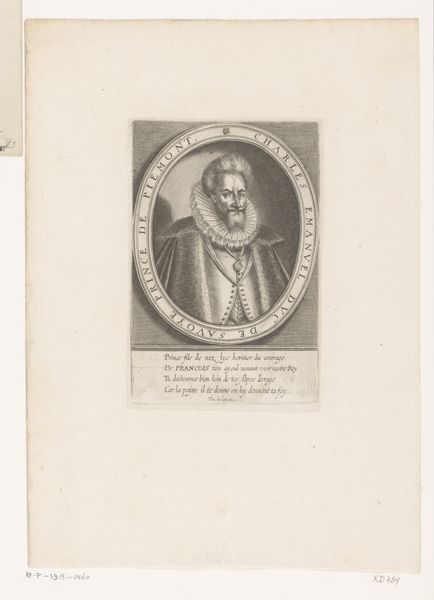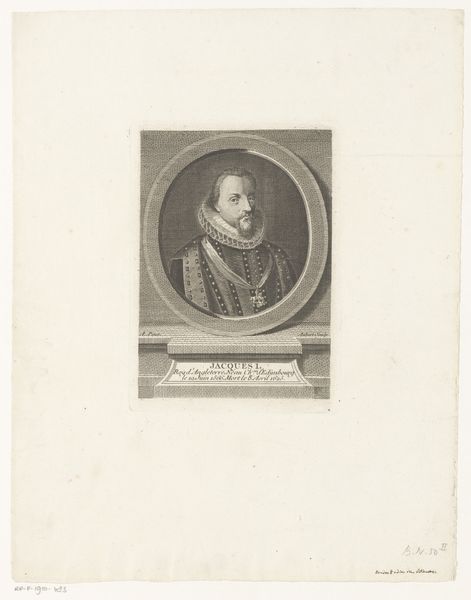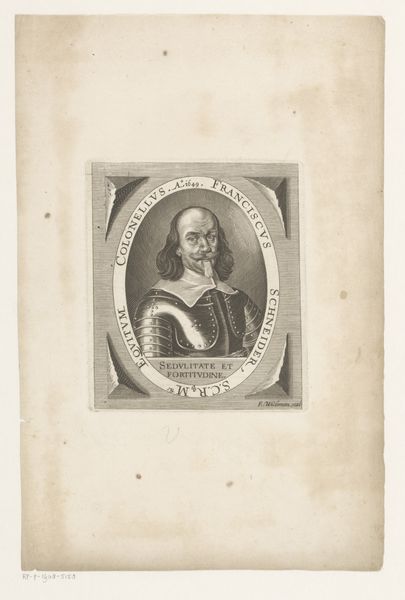
etching, pencil, engraving
#
portrait
#
neoclacissism
#
etching
#
old engraving style
#
white palette
#
pencil
#
history-painting
#
engraving
#
monochrome
Dimensions: height 170 mm, width 117 mm
Copyright: Rijks Museum: Open Domain
Curator: Look at this etching, "Portret van Heinrich Ott," created by Johann Rudolph Holzhalb in 1786. What strikes you about it? Editor: It feels very formal, almost austere. The monochrome and the precise lines give it a sense of restrained power, and I find the medium particularly interesting, etching is relatively uncommon today. What can you tell me about this work? Curator: For me, it is an exercise in the consumption of status and class through printed media. An etching like this was, in its time, reproducible; the means to display an image conveying the subject's power was therefore more democratized. Editor: Democratized through etching? I understand the reproducible aspect, but the craft seems really demanding! Was the material important in making this decision? Curator: Absolutely. The choice of etching points directly to a mode of production, an availability of specific resources like the metal plate, acids, and tools necessary to its making, but it also demands a highly skilled artisan. We can consider the labour involved, a tension between exclusive mastery and dissemination to a broader market for consumption. This piece signifies wealth, not necessarily the sitter's, but someone in his orbit. This is social exchange using the materials of representation. Editor: That's a really interesting perspective. So you are saying it's not just *what* is shown, but also *how* it's made and *who* had access to that "how" that really matters? Curator: Exactly! Consider the shift in meaning if this was, say, a unique oil painting. The materials and the production define its role within society, impacting how we understand the image itself. Editor: I had never considered that aspect of artistic production. Thanks for the insight. Curator: It challenges our notion of art as purely aesthetic and elevates our awareness of its deep relationship to social and economic realities. A useful reframing of artistic representation.
Comments
No comments
Be the first to comment and join the conversation on the ultimate creative platform.
